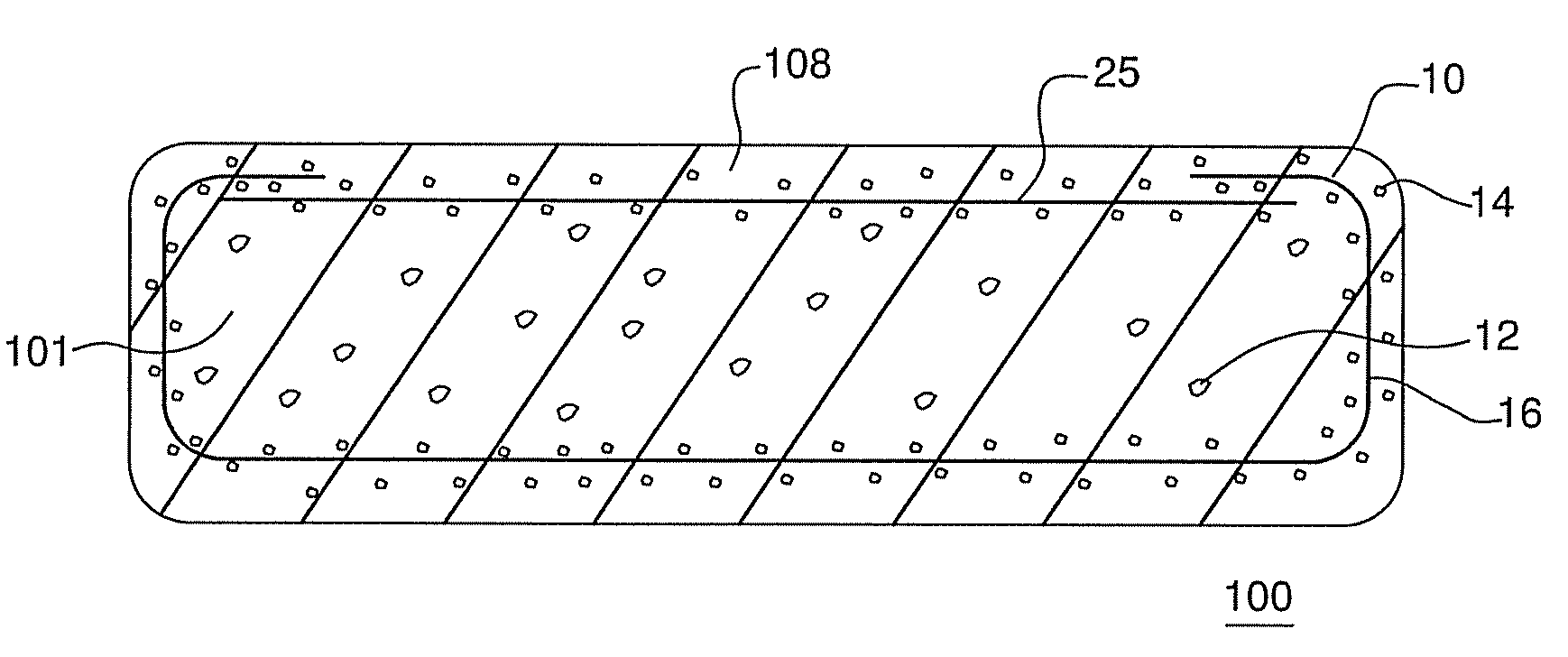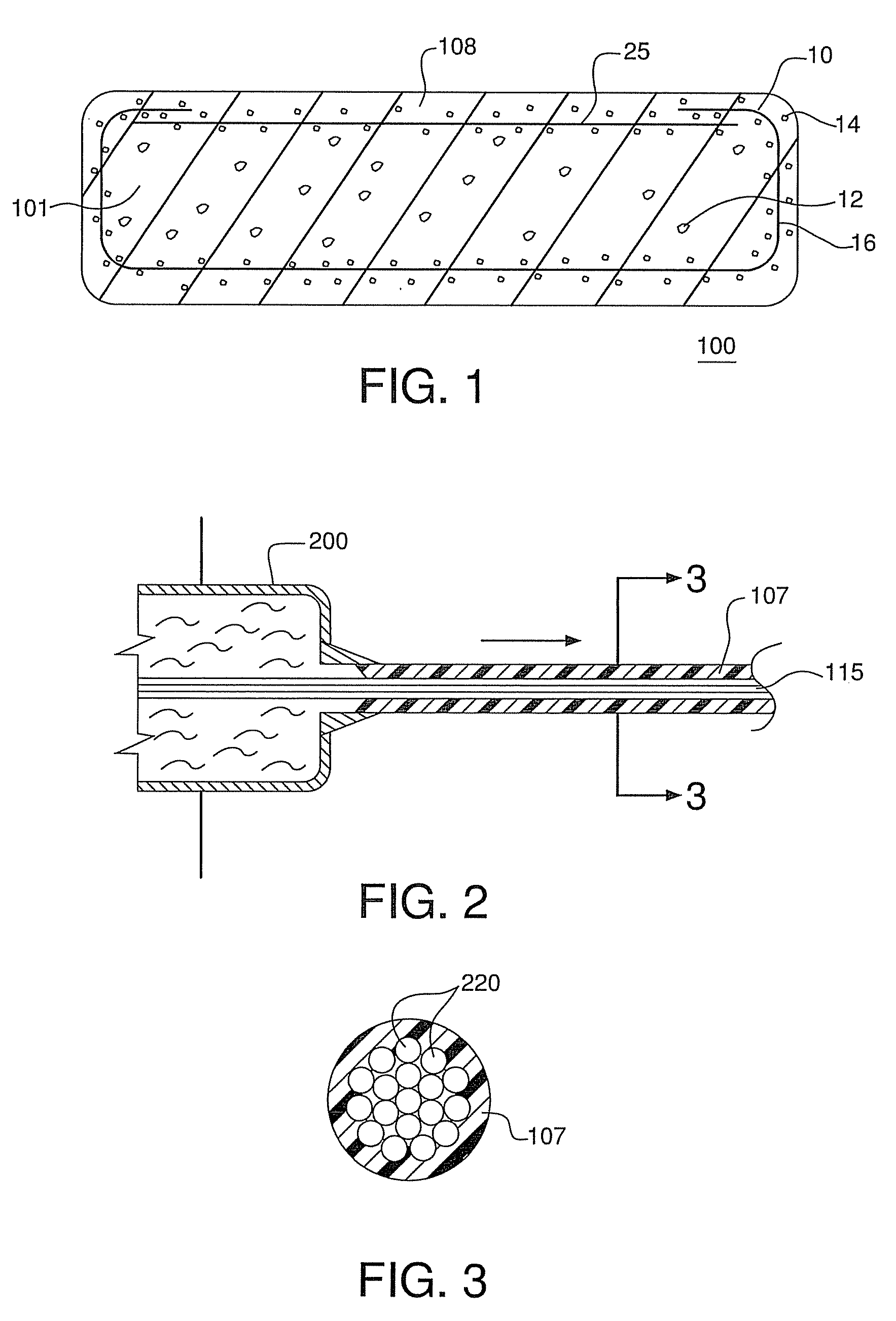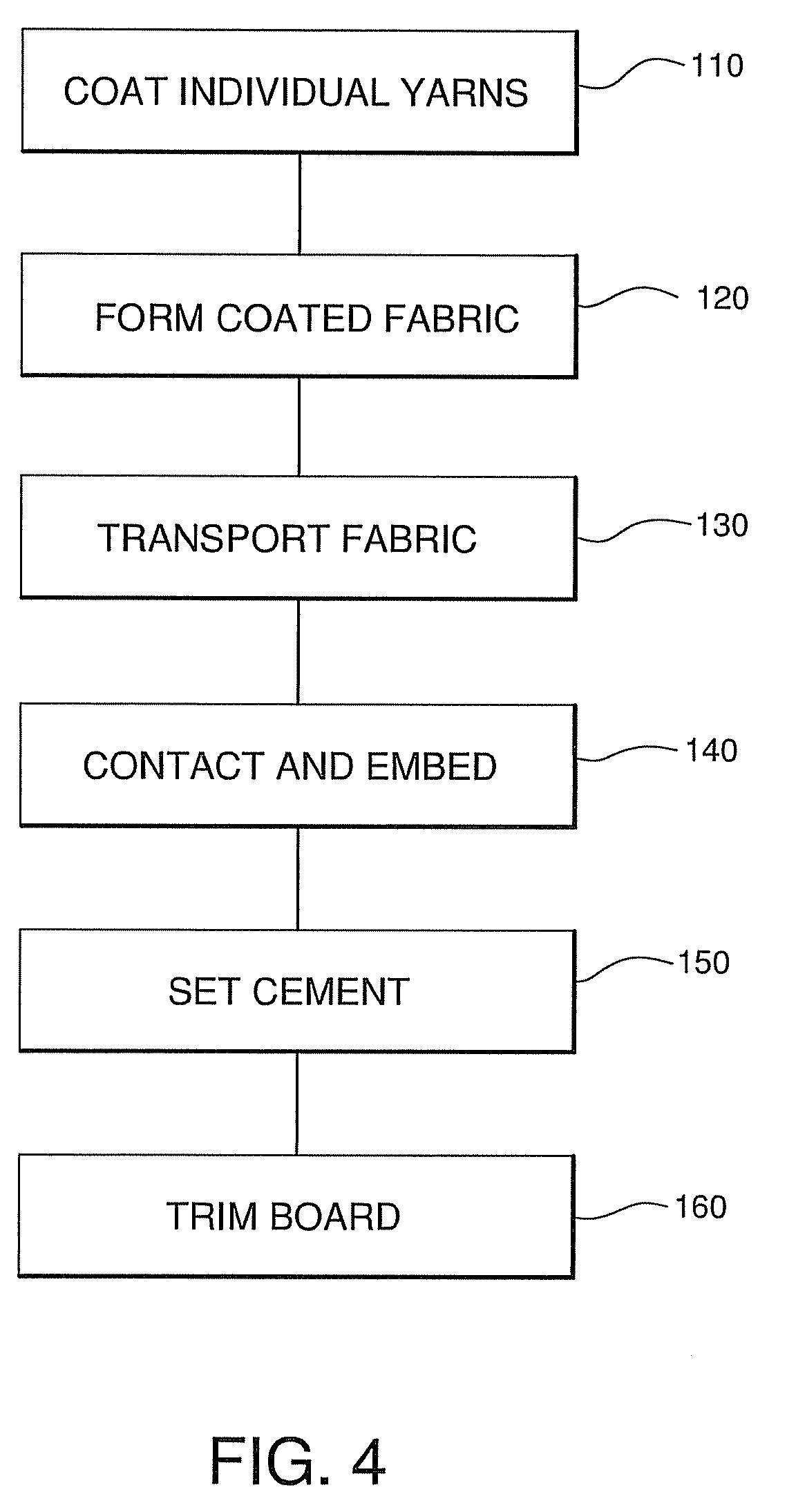Polyolefin coated fabric reinforcement and cementitious boards reinforced with same
a technology of cementitious boards and fabric reinforcements, applied in the direction of textiles, paper, synthetic resin layered products, etc., can solve the problems of high cost of coating each strand individually, deformation of most glass fiber compositions, and inability to meet the needs of use, and achieve low “voc” and high line speed. , the effect of reducing the risk of cracking
- Summary
- Abstract
- Description
- Claims
- Application Information
AI Technical Summary
Benefits of technology
Problems solved by technology
Method used
Image
Examples
Embodiment Construction
[0055]Facing materials, cementitious boards and methods of manufacturing cementitious boards having the facing materials of this invention are provided. Facing materials which are embedded totally, or only partially, so as to present a fibrous facing, are within the scope of this invention. The fabric reinforcements of this invention can be employed in many end-use reinforcement applications, such as, for example, gypsum and cement boards, asphalt and road reinforcement, roofing applications, soil reinforcement, polymer-matrix reinforcement, and as stand-alone coated fabrics in filters, screens and garment applications.
[0056]With reference to the Figures, and particularly to FIGS. 1-6 thereof, there is depicted a cement board 100 and coated glass fabric reinforcement 10 having coated warp yarns 16 and coated weft yarns 14 disposed in a preferred laid scrim, useful as an embedded facing layer of the preferred cement board 100 of this invention. Needled, woven, knitted, braided and me...
PUM
| Property | Measurement | Unit |
|---|---|---|
| wt. % | aaaaa | aaaaa |
| thicknesses | aaaaa | aaaaa |
| thicknesses | aaaaa | aaaaa |
Abstract
Description
Claims
Application Information
 Login to View More
Login to View More - R&D
- Intellectual Property
- Life Sciences
- Materials
- Tech Scout
- Unparalleled Data Quality
- Higher Quality Content
- 60% Fewer Hallucinations
Browse by: Latest US Patents, China's latest patents, Technical Efficacy Thesaurus, Application Domain, Technology Topic, Popular Technical Reports.
© 2025 PatSnap. All rights reserved.Legal|Privacy policy|Modern Slavery Act Transparency Statement|Sitemap|About US| Contact US: help@patsnap.com



